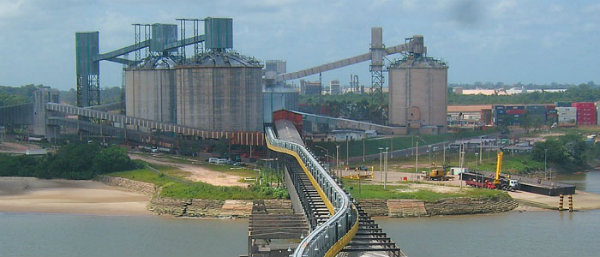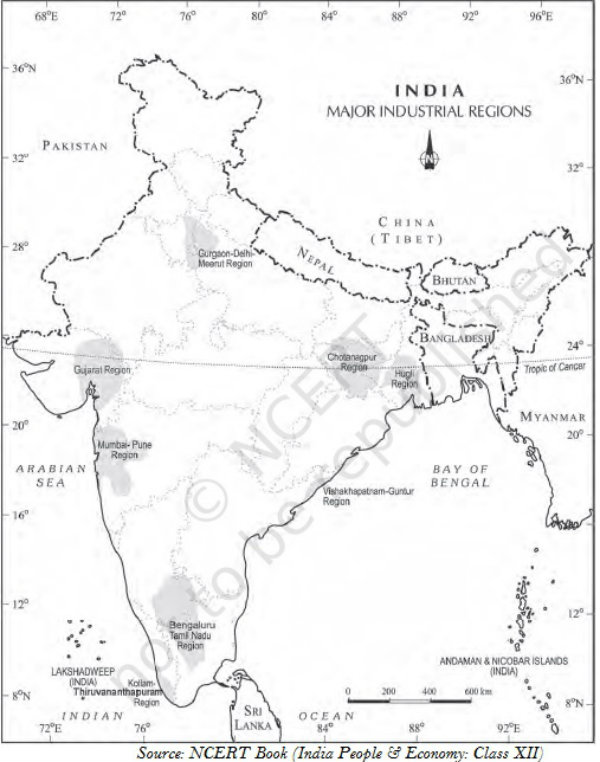
- Geography India - Introduction
- Geography India - Physical Aspect
- Geography India - Drainage System
- Geography India - Climate
- Geography India - Natural Vegetation
- Geography India - National Forest
- Geography India - Wildlife
- Geography India - Soil
- Geography India - Land Resources
- Geography India - Agriculture
- Geography India - Mineral Resources
- Geography India - Energy Resources
- Geography India - Industry
- Geography India - Transport
- Geography India - Communication
- Geography India - Foreign Trade
- Geography India - The People
- Geography India - Settlement
- Geography India - Migration
- Regional Development
- Geography India - Disasters
- Geography of the World
- Geography World - Introduction
- Evolution of the Earth
- Geography World - Climate
- Geography World - Transport
- Geography World - Communications
- Geography World - Population
- Human Settlement
- Human Development
- International Trade
- Geography Useful Resources
- Geography - Online Quiz
- Geography - Online Test
- Geography - Quick Guide
- Geography - Useful Resources
- Geography - Discussion
Geography India - Industry
Introduction
On the basis of size, capital investment, and labor force employed, industries are classified as large, medium, small scale, and cottage industries.

On the basis of ownership, industries come under public sector, private sector, joint, and cooperative sector.
Industries of strategic and national importance are usually in the public sector.
Industries are also classified on the basis of the use of their products such as basic goods industries, capital goods industries, intermediate goods industries, and consumer goods industries.
On the basis of raw materials used by the industries − industries are categorized as agriculture-based industries, forest-based industries, mineral-based industries, and industrially processed raw material-based industries.
Location of industries is influenced by several factors like access to raw materials, power, market, capital, transport, and labor, etc.
Establishment of iron and steel industry in Bhilai (Chhattisgarh) and Rourkela (Odisha) were based on decision to develop backward tribal areas of the country.
Iron and Steel Industry
The major raw materials for the iron and steel industries are iron ore, coking coal, limestone, dolomite, manganese, and fire clay.
-
Major iron and steel industries in India are −
The Tata Iron and Steel plant (TISCO);
The Indian Iron and Steel Company (IISCO);
Visvesvaraiya Iron and Steel Works Ltd. (VISL);
Rourkela Steel Plant;
Bhilai Steel Plant;
Durgapur Steel Plant; and
Bokaro Steel Plant.
-
Some other major iron and steel industries are −
Vizag Steel Plant, in Vishakhapatnam in Andhra Pradesh is the first port based plant which started operating in 1992.
The Vijaynagar Steel Plant at Hosapete in Karnataka was developed by using indigenous technology.
The Salem Steel Plant in Tamil Nadu was commissioned in 1982.
The Rourkela Steel plant was set up in the year 1959 in the Sundargarh district of Odisha in collaboration with Germany.
The Bhilai Steel Plant was established in 1959 with Russian collaboration in Durg District of Chhattisgarh.
Durgapur Steel Plant was established in 1962 in West Bengal, in collaboration with the government of the United Kingdom
Bokaro steel plant was set up in 1964 at Bokaro with Russian collaboration.
Cotton Industry
India was famous worldwide for the production of muslin, a very fine variety of cotton cloth, calicos, chintz, and other different varieties of fine cotton cloth.
In 1854, the first modern cotton mill was established in Mumbai.
At present, the major centers of the cotton textile industry are Ahmedabad, Bhiwandi, Solapur, Kolhapur, Nagpur, Indore, and Ujjain.
Tamil Nadu has the largest number of mills; however, most of them produce yarn rather than cloth.
Davangere, Hubballi, Ballari, Mysuru, and Bengaluru are important cotton growing regions in Karnataka.
Sugar Industry
With more than one-third of the total production, Maharashtra has emerged as a leading sugar producer in the country.
Uttar Pradesh is the second largest producer of sugar.
Petrochemical Industry
Many items are derived from crude petroleum, which provide raw materials for many new industries; hence, these are collectively known as petrochemical industries.
Petrochemical industries are categorized as polymers, synthetic fibers, elastomers, and surfactant intermediate industries.
Mumbai is the hub of petrochemical industries.
-
Three organizations, which are working in the petrochemical sector under the administrative control of the Department of Chemicals and Petrochemicals are −
The Indian Petrochemical Corporation Limited (IPCL);
The Petrofils Cooperative Limited (PCL);
The Central Institute of Plastic Engineering and Technology (CIPET).
The National Organic Chemicals Industries Limited (NOCIL), established as private sector in 1961.
Information Technology
The Information Technology (IT) revolution opened up new possibilities of economic and social transformation.
The IT software and services industry account for almost 2% of Indias GDP.
Industrial Policy
The new Industrial Policy was implemented in 1991.
The new industrial policy has three main dimensions − liberalization, privatization, and globalization.
Within this new industrial policy, measures initiated are − abolition of industrial licensing; free entry to foreign technology; foreign investment policy; access to capital market; open trade; abolition of phased manufacturing program; and liberalized industrial location program.
Globalization means integrating the economy of the country with the world economy.
Industrial Regions
-
India has eight major industrial regions namely (as shown on the map given below) −
Mumbai-Pune Region,
Hugli Region,
Bengaluru-Tamil Nadu Region,
Gujarat Region,
Chhotanagpur Region,
Vishakhapatnam-Guntur Region,
Gurgaon-Delhi-Meerut Region, and
Kollam-Thiruvananthapuram Region.
